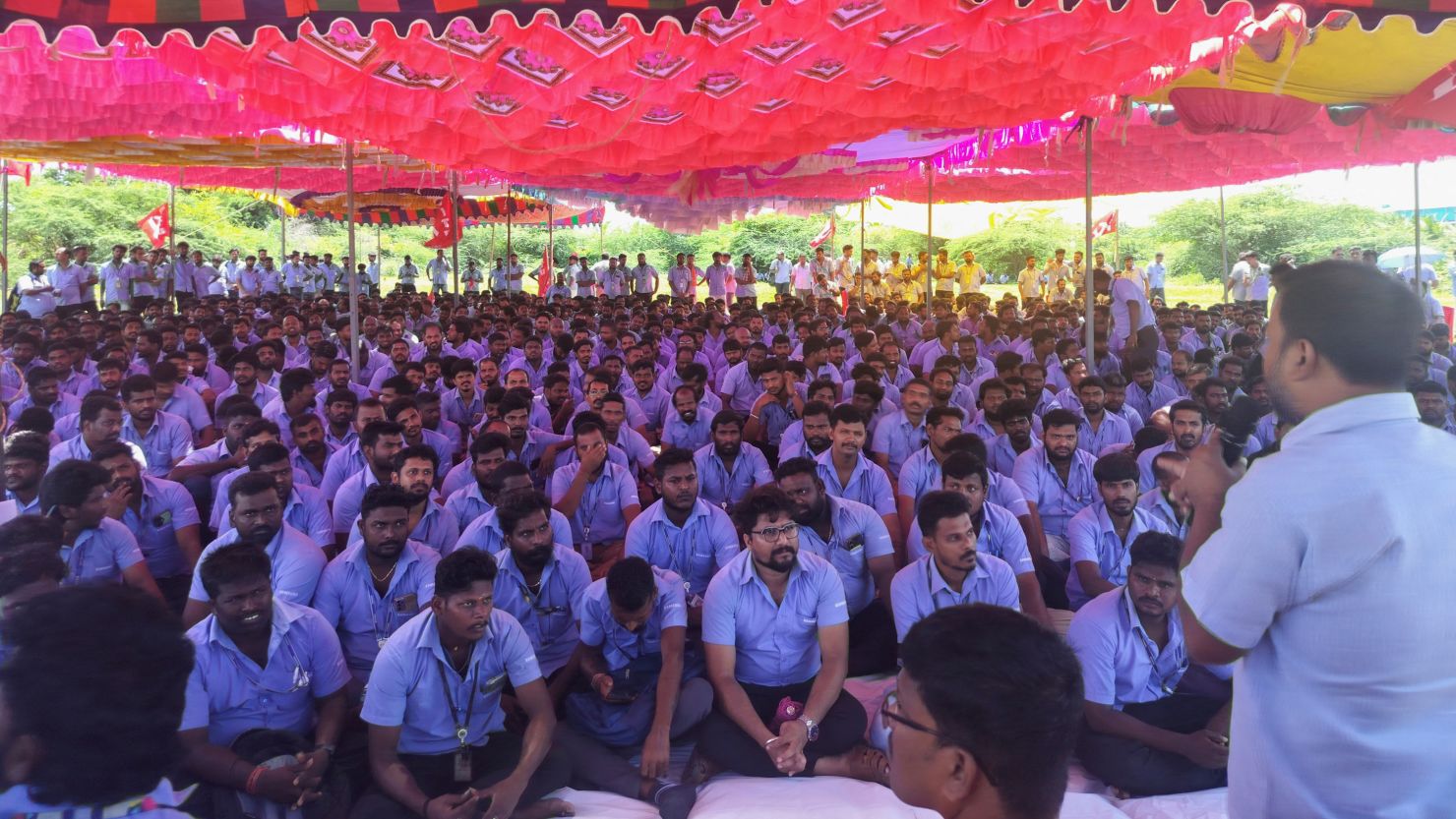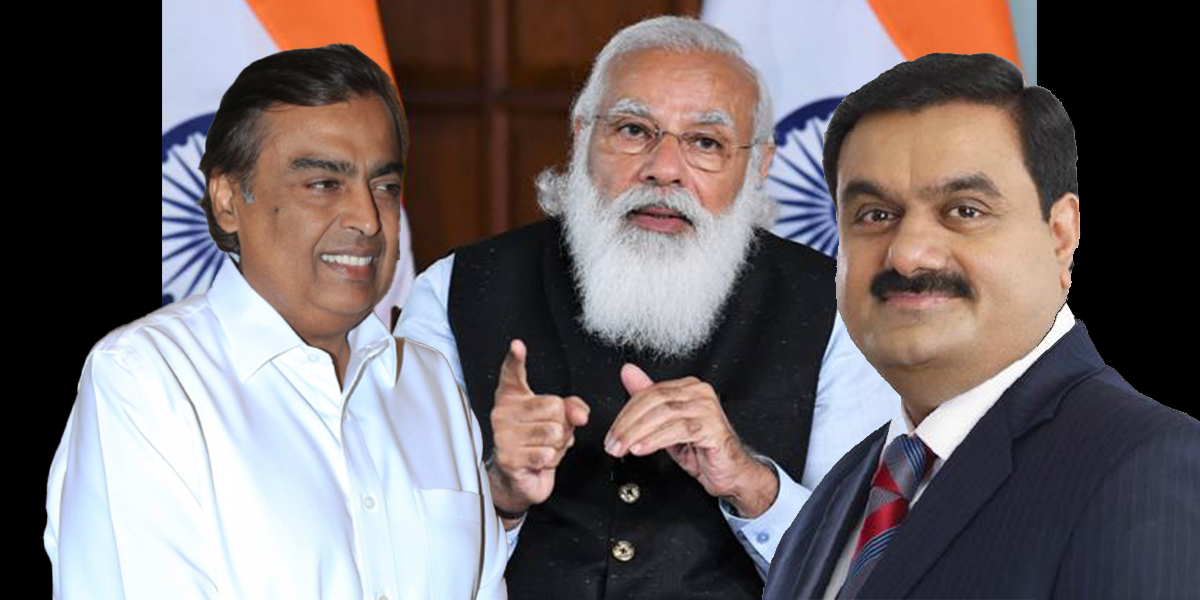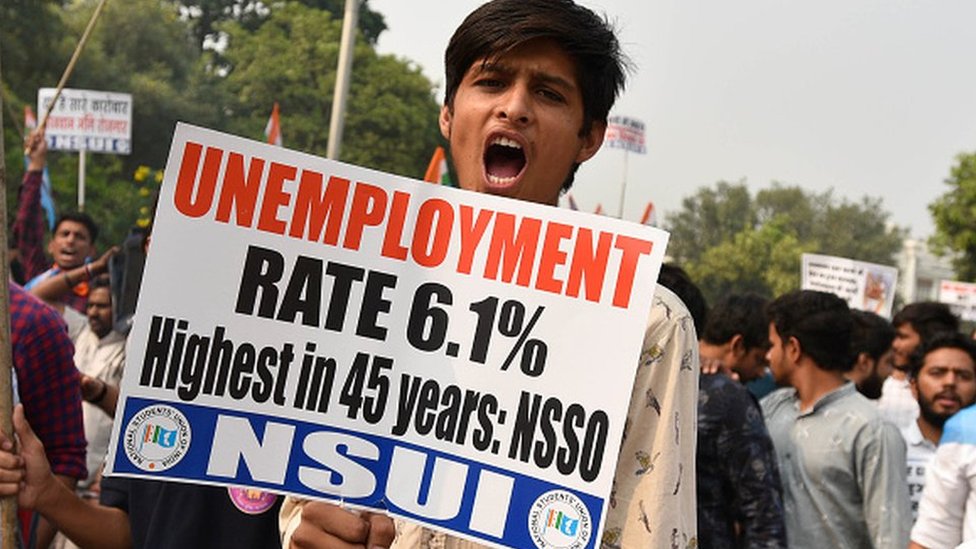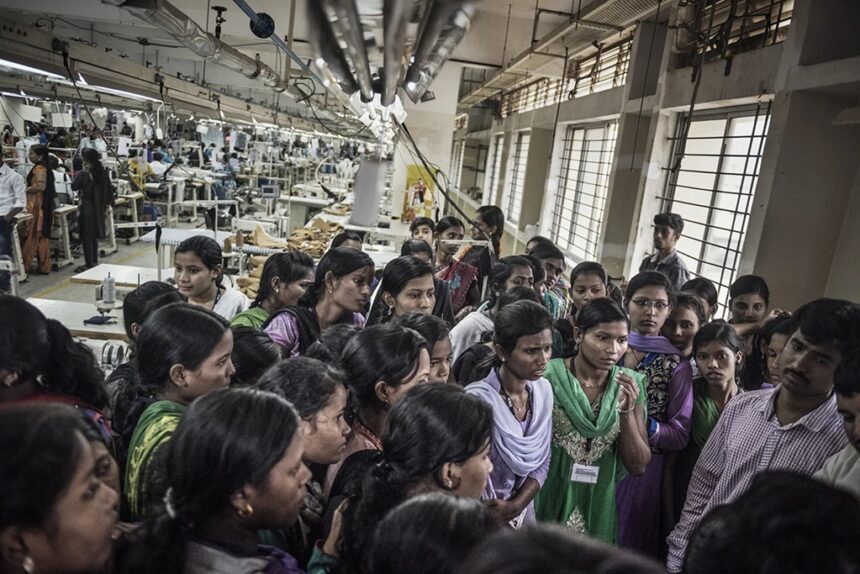NEW DELHI – In the busy towns of Tiruppur, Surat and Ludhiana, India, the steady hum of textile mills continues, but uncertainty hangs over the workers. The United States, India’s biggest export customer, has slapped a 50% tariff on Indian goods.
This sudden move puts India’s textile, gems, jewellery and auto parts industries in a difficult spot. Announced by U.S. President Donald Trump on August 6, 2025, the tariffs are a response to India buying discounted Russian oil, which Trump claims boosts Russia’s actions in Ukraine.
As the effects ripple through, many Indian workers fear losing their jobs, while some blame Prime Minister Narendra Modi, saying he favours wealthy business owners over ordinary workers.
A Heavy Hit to India’s Exports
India exported goods worth $86.5 billion to the United States in the financial year 2024-25. Two-way trade reached $131.8 billion, with India holding a healthy surplus. The tariffs include a 25% duty from August 7, and another 25% set for August 27.
This will disrupt nearly 55% of India’s shipments to the U.S., cutting into over $54 billion in trade. The Global Trade Research Initiative warns that Indian exports to the U.S. could drop 40–50%, making them less competitive compared to Vietnamese and Bangladeshi goods, which face duties closer to 19–20%.
The textile and apparel industry, which sends $10.3 billion in products to the U.S. each year, faces the biggest pressure. Gems and jewellery exports, valued at $12 billion, plus auto components at $7 billion, are also under strain.
Shipments of shrimp, leather goods, footwear, chemicals and machinery all see higher costs. The Confederation of Indian Textile Industry calls the tariffs a “huge setback,” and warns its business in the U.S. will struggle to keep up.

Workers Bear the Brunt
In Tiruppur, which drives much of India’s knitwear production, the impact is already felt. R. Selvaraj, a 42-year-old weaver, fears for his future. “We worked extra hours for U.S. orders, but those are being cancelled. If the factory closes, how do I support my family?” he asked India Times.
This trade depends on millions of workers, both directly and indirectly, with small businesses at the core. Reports from the region describe the tariffs as an “effective embargo,” and some exporters now seek credit guarantees to survive this period.
Surat, well-known for textiles and diamonds, faces similar issues. “The U.S. was our largest customer,” explained Priya Patel, who works in garment manufacturing. “Orders are drying up, and we’re being warned about layoffs soon.” Industry estimates suggest the garment sector alone could lose tens of thousands of jobs if the situation drags on.
The chairman of the Gems and Jewellery Export Promotion Council, Kirit Bhansali, says the mood is grim, with some exporters looking to reroute products through Dubai or Mexico to try and get around the tariffs.
Small auto parts manufacturers are also on edge. Many, like Anil Sharma, who runs a unit in Pune, say they cannot absorb tariffs of this size. “If customers stop buying, I’ll have to lay off half my staff,” Sharma said. Fewer orders would stall business growth and could make new investors cautious, adding more stress to India’s manufacturing sector.

Modi Accused of Protecting the Wealthy
As the economic impact grows, many working-class Indians say they feel let down by Prime Minister Narendra Modi. They argue he protected rich industrialists who benefited from cheaper Russian oil, while everyday workers now face the consequences of U.S. retaliation.
Since the start of the Russia-Ukraine conflict, India boosted Russian oil purchases, which now cover 37% of its needs, saving £3.8 billion in 2024-25 even as discounts shrink.
“Modi looks after his donors who profit from Russian oil, but we pay the price for those decisions,” said Sanjay Kumar, a textile worker in Ludhiana. Opposition leaders and parties echo these complaints, urging Modi to push back against Trump’s move and defend the export sector.
Modi, in an address on August 7, insisted that farmers, fishers and workers remain his top concern, even saying he is personally willing to pay the price. Critics respond that his refusal to reduce Russian oil imports led to the American tariffs, putting millions of jobs at risk.
India’s government calls the tariffs “unfair” and “unreasonable,” stating its energy policy serves the needs of 1.4 billion people. Officials also point out that other countries like China and Turkey buy Russian oil, yet have not faced similar penalties.
“This is a political move, not economic,” said Shilan Shah from Capital Economics. India says it does not want to appear to submit to U.S. pressure.

Economic Domino Effect
Analysts warn that India’s GDP growth could fall by 0.2–1% in 2026, depending on the outcome of ongoing trade talks. HDFC Bank’s Sakshi Gupta told Reuters that, without an agreement, growth might drop below 6%.
The PHD Chamber of Commerce and Industry estimates $8.1 billion in exports face direct risk, and wider effects may spread as supply chains falter and demand slows.
The rupee has lost ground, and shares in export-heavy businesses have stumbled. Societe Generale reports higher currency volatility, which influences overseas investment. While services like IT and pharmaceuticals are currently untouched, experts warn that the impact on labour-heavy industries could spark major job losses, especially among small and medium businesses.
Ajay Bagga, a markets analyst, notes that if duties go above 25%, trade in certain goods stalls, regardless of how high the tariffs get.
With three weeks before the second round of tariffs starts, India is looking at possible responses. The government is said to be considering interest subsidies and export credit insurance to help businesses, but a formal plan has yet to be announced.
Talks with U.S. trade officials are ongoing, aiming to finish the first phase of a trade deal by October or November. However, India stands firm on defending its farm, dairy and GM crop sectors, which remain points of tension in discussions.
Policy Reform in India
Business leaders want to open up new markets, especially in Europe and Southeast Asia, to reduce reliance on the U.S. “Exporters should target alternative markets for growth,” suggests Yadvendra Singh Sachan of Growmore International Ltd.
Some, like Titan, are weighing options to manufacture in the Middle East to avoid the tariffs, while others look at teaming up with U.S. companies to shift exports into local services instead. Anand Mahindra, a notable business figure, sees this crisis as a possible turning point for policy reforms.
The 50% U.S. tariffs put a strain on relations between the two countries, undoing years of cooperation. Experts warn that if ties worsen, China could benefit, as it too imports Russian oil but has not faced similar U.S. penalties. “If relations sour further, China gains strength,” said Farwa Aamer from the Asia Society.
As India tries to respond to this trade crisis, the stakes are high. The tariffs put not just India’s export businesses at risk but also the livelihoods for millions of workers in the main industries such as textiles and auto parts.
For people like Selvaraj and Patel, the next few months will decide whether their jobs survive, as the country tries to secure its energy, maintain international partnerships and protect its economy. With factory production slowing and new orders uncertain, workers hope their needs will not be ignored in favour of those with more influence.














